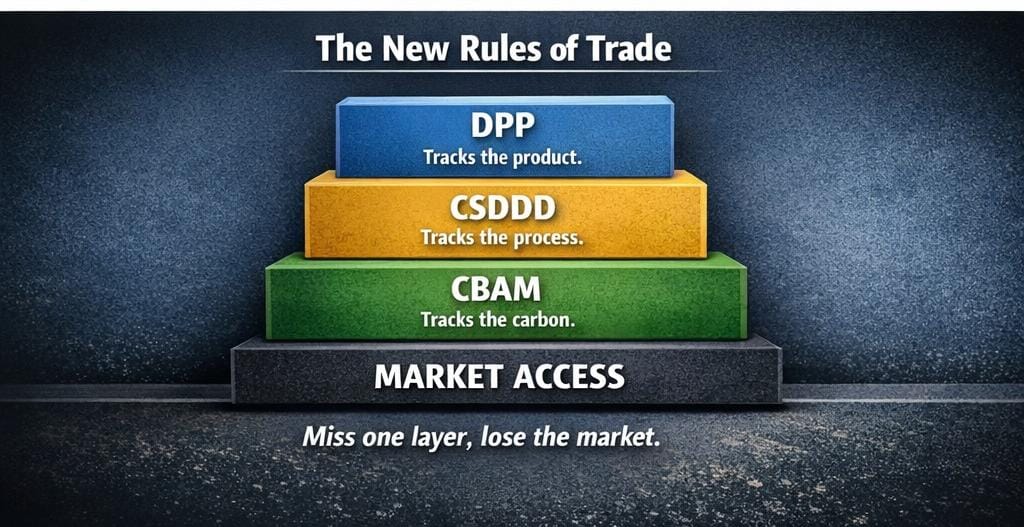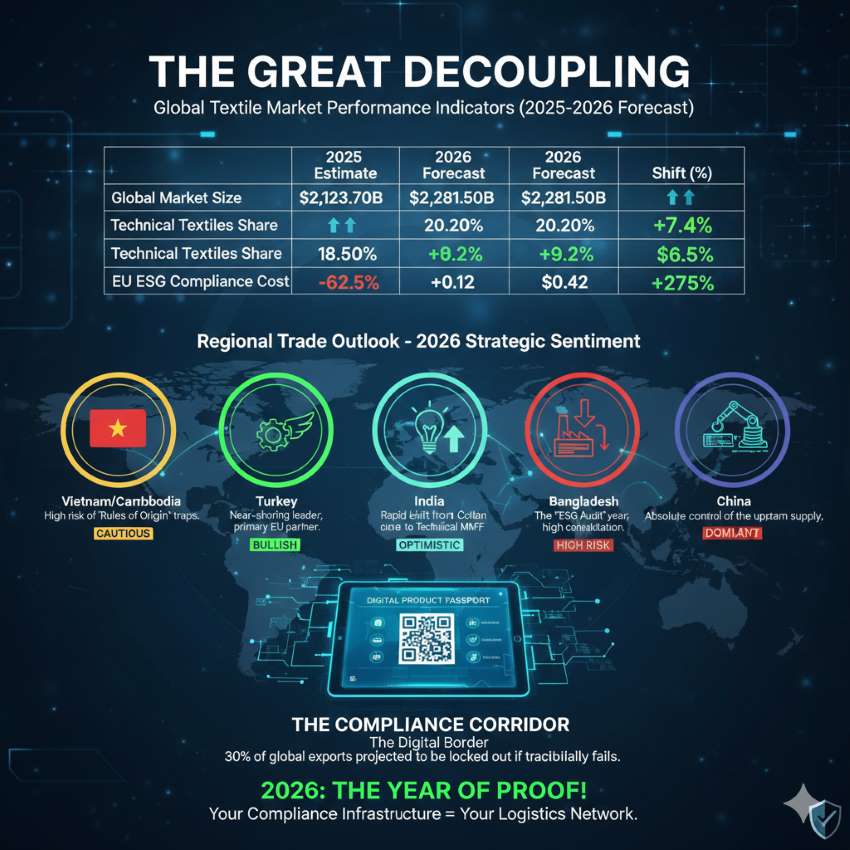
The European Union's appetite for T-shirts remains robust, with consumption expected to grow steadily over the next decade, albeit at a moderate pace. However, the market is witnessing a significant shift, with imports playing an increasingly dominant role as domestic production falters. A recent market analysis reveals, the EU's T-shirt consumption is projected to reach 3 billion units by 2035, growing at a CAGR of over 0.6 per cent from 2024. While this signals continued demand, the growth rate indicates a deceleration compared to the past.
T-shirt consumption trends
In 2024, the EU consumed approximately 2.8 billion tees, much like the previous year. From 2013 to 2024, consumption volume increased at an average annual rate of over 2.1 per cent, demonstrating a relatively stable trend with some fluctuations. The market peaked at 3.2 billion units in 2022, before experiencing a slight dip in the following years.
Table: T-shirt consumption
|
Year |
Consumption volume (bn units) |
|
2013 |
2.2 |
|
2014 |
2.3 |
|
2015 |
2.4 |
|
2016 |
2.5 |
|
2017 |
2.6 |
|
2018 |
2.7 |
|
2019 |
2.8 |
|
2020 |
2.9 |
|
2021 |
3.1 |
|
2022 |
3.2 |
|
2023 |
2.8 |
|
2024 |
2.8 |
In value terms, the EU's T-shirt market reached $9.3 billion in 2024, a slight decrease from the previous year. Despite this, the overall consumption trend has remained relatively flat, with a peak of $11.3 billion reached in previous years. Germany, France, and Spain remain the largest consumers, accounting for 46 per cent of total EU consumption in 2024. Germany alone consumed 609 million units, followed by France (361 million) and Spain (335 million). Notably, Poland has seen the most significant growth in consumption, with a CAGR of +9.0 per cent from 2013 to 2024.
Imports grow as domestic production dips
While consumption remains steady, the EU's domestic T-shirt production has witnessed a sharp decline. In 2024, production fell to 281 million units, a 19.7 per cent drop from the previous year. This downward trend has been consistent since 2014, when production peaked at 594 million units.
To meet demand, the EU relies heavily on imports. In 2024, T-shirt imports reached 4.3 billion units, despite a -9.9 per cent decrease from the previous year. Over the period from 2013 to 2024, imports increased at an average annual rate of over 2.2 per cent, highlighting the growing dependence on foreign suppliers.
Table: T-shirt imports
|
Year |
Import volume (bn units) |
|
2013 |
3.4 |
|
2014 |
3.5 |
|
2015 |
3.6 |
|
2016 |
3.7 |
|
2017 |
3.8 |
|
2018 |
4 |
|
2019 |
4.2 |
|
2020 |
4.4 |
|
2021 |
4.9 |
|
2022 |
5.3 |
|
2023 |
4.8 |
|
2024 |
4.3 |
Germany, Spain, and France are the largest importers, collectively accounting for 72 per cent of total EU imports. Specifically, Germany imported 879 million units. Spain 608 million units, France 462 million units, Netherlands 405 million units, Italy 366 million units and Poland 362 million units. In fact, Poland has shown the highest growth rate, with a CAGR of over 10.0 per cent from 2013 to 2024.
The Asian share
A significant portion of the EU's T-shirt imports originates from Asia. While precise, publicly available breakdowns for all Asian countries are limited, it's widely acknowledged that China, Bangladesh, India, and Vietnam are key suppliers. Based on general trade data and industry reports, it can be estimated that:
China: Remains a major supplier, though its share may be gradually shifting due to rising labor costs and diversification of sourcing.
Bangladesh: Is a prominent player, known for its large-scale garment manufacturing and competitive pricing.
India: Contributes significantly, with a growing focus on value-added products and sustainable practices.
Vietnam: Is an increasingly important source, benefiting from trade agreements and expanding production capacity.
Rest of Asia: other Southeast Asian nations contribute a growing percentage of the imports.
Estimating Asia’s share
It is estimated that the Asian region accounts for over 60% of the EU's total t-shirt imports. This highlights the EU's reliance on Asian manufacturing for its apparel needs.
Cotton tees dominate the import market, making up 82 per cent of total imports in 2024. This segment has also seen the fastest growth, at a CAGR of over 2.7 per cent from 2013 to 2024. The average import price of a T-shirt in the EU was $4.1 per unit in 2024, down -5.6 per cent from previous year. Prices vary significantly by product type and country of origin.
Dichotomy of EU’s T-shirt consumption
There is apparent dichotomy between EU’s T-shirt consumption and import volumes, where imports significantly exceed consumption. This is due to several factors. Re-exports is one reason. A substantial portion of imported T-shirts may not be intended for final consumption within the EU. Instead, they could be re-exported to countries outside the EU. The EU acts as a major trade hub, with goods flowing in and out. This means that import figures can be inflated by transit goods.
Large retailers and distributors within the EU often import large quantities of T-shirts to maintain inventory and ensure efficient distribution. These imports may not be immediately reflected in consumption figures, as they are stored in warehouses awaiting sale. Therefore, import numbers will reflect the amount of goods coming into the EU, where consumption numbers reflect what is sold to the end user.
Moreover, the modern apparel industry relies on complex global supply chains. T-shirts may be imported in bulk for various stages of processing, such as printing, labeling, or packaging, before being distributed to retailers. This can result in multiple import entries for the same products.
There can also be discrepancies between import and consumption data due to differences in data collection methods, reporting periods, and product categorization. Also, ‘consumption’ can be a hard figure to pin down, as it relies on many different data sources.
Also, retailers sometimes import more goods than they end up selling. This leads to overstocking, and these goods are still counted in import numbers, but have not been consumed. In essence, the higher import volumes don't necessarily mean that EU citizens are consuming more T-shirts than the consumption figures suggest. Rather, it reflects the EU's role in the global trade network, the complexities of modern supply chains, and potential statistical differences.
However, the data clearly indicates a changing EU T-shirt market. While consumption continues to rise, albeit at a slower pace, the decline in domestic production and the rise in imports, particularly from Asia, highlight the increasing globalization of the industry. Factors such as cost competitiveness, supply chain efficiencies, and evolving consumer preferences are likely driving these trends. The market is expected to continue growth, but its reliance on imports, heavily influenced by Asian suppliers, is set to increase, reshaping the industry landscape in the years to come.












